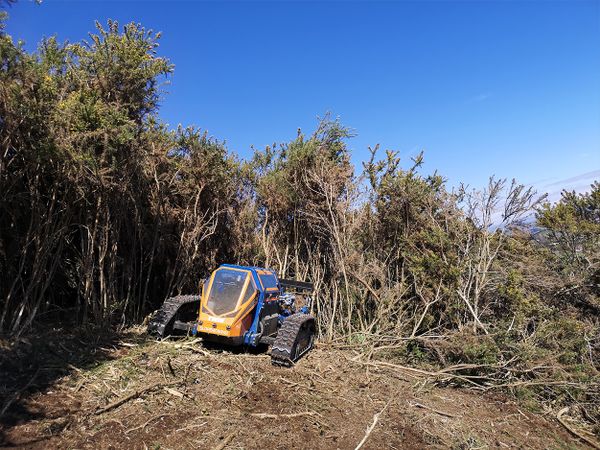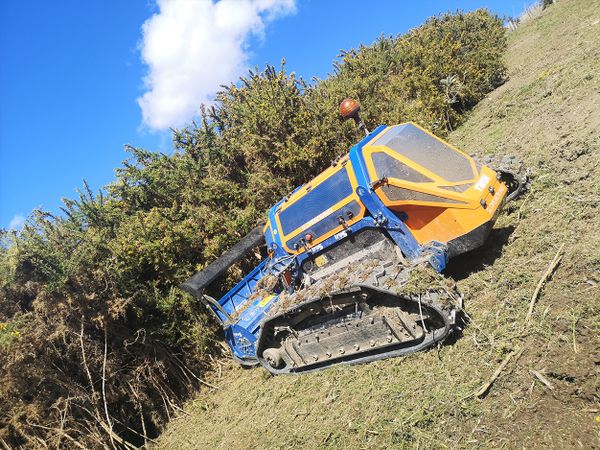
Land Clearing
Powerful and at the same time compact, The Slopemowing.com Forestry Mulcher is suitable for the most varied application - in forestry, in agriculture and in greenspace maintenance.
Ideal for the creation and maintenance of fire breaks, vegetation management, right-of-way, land clearing, site preparation, pipelines and power transmission lines as well as for roadside maintenance.
Forestry mulching is a land clearing method that uses a single machine to cut, grind, and clear vegetation.
Our forestry mulching machine, also referred to as a Forestry Mulcher, Masticator or Brushcutter, uses a rotary drum equipped with specifically designed chipper tools (“teeth”) to shred vegetation.
Our Forestry Mulchers can clear a considerable acreage of vegetation a day depending on terrain, density and type of material.
Forestry Mulchers are often used for land clearing, right-of-way, pipeline/power line, and wildfire prevention and management, vegetation management, invasive species control and wildlife restoration projects.
Applications of forestry mulching Right-of-way clearing and maintenance:
Forestry mulching is used in the right-of-way clearing and maintenance for roads, highways, pipelines, and other utility lines. This process often requires the complete removal of standing trees, stumps, and vegetation.
Right-of-way maintenance:
Line maintenance involves keeping electricity and overhead cables, underground cables, pipelines and railway lines clear. The areas which need to be kept clear are often difficult to access.
Extraction and access routes:
Access routes are created to transport harvested timber from the forest to the respective loading areas. These tracks are usually unpaved roads that are maintained or kept available for long periods for accessing forest stands. Wildfire prevention and management
Surface vegetation acts as a fuel source and greatly increases the risk of fire and the speed of spread.

Proactive mulching:
Mulching reduces the potential for wildfires by eliminating small leafy plants, fallen or rotten trees, and other fuel sources.If left untreated, these fuel loads increase the potential for fire, increase the heat intensity, and serve as fire ladders that enable fire to elevate quickly to the tops of trees which is where a fire can spread most quickly. Mulching can also be used to create a coarse grind finish that can create a more ideal controlled burn.
Reactive mulching:
In addition to proactive thinning of vegetation to mitigate fire fuels, forestry mulching can be used for reactive cutting of lines (fire breaks) on active fires. Larger forestry mulchers leave minimal cleanup requirements and can help reduce the overall costs of active fire mitigation.
Cleanup:
After the fire is out and cleanup efforts are underway, tracked forestry mulching machines, mulching attachments, and an excavator with a mulching attachment can provide a top layer of mulch to prevent soil erosion on slopes and minimize water pollution.
Wetlands and riparian habitat conservation:
Forestry mulching has become popular among non-profit riparian conservation organizations, government agencies, hunt clubs, and private landowners in attempts to maintain habitats for pheasants, doves, pigs, deer and various other animals. Maintaining an animal habitat encompasses several different aspects: food, water, shelter, and space, and there are many products that can help reclaim and maintain wildlife habitats for these animals.
Shelter and space:
Mulching can remove invasive underbrush that prevents the growth of the grasses required by certain animals for shelter, breeding, escaping the summer heat, and protecting themselves from cold temperatures.
Water:
Forestry Mulchers can be used to restore water source access that has been blocked due to tree and under-story growth, allowing wild animals to access the water.



